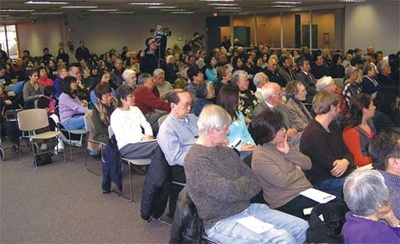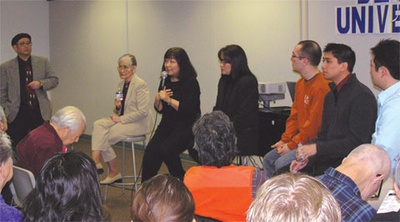Issei, Nisei, Sansei, Yonsei, Gosei. It never occurred to me that I would live to see five generations of Japanese Americans, but I have.
When Japan bombed Pearl Harbor on December 7th, 1941, our country was thrown into turmoil. Most of the world was already involved in what would be known as World War II, and now the United States was dragged into it. Old feelings of racial prejudice reared up against Japanese Americans, who were considered a threat to this country by some now that we were at war with Japan. Despite evidence by government organizations, including the F.B.I., that Japanese Americans were of no threat to their own country, President Franklin D. Roosevelt signed Executive Order 9066 on February 19, 1942.
With the stroke of his pen, Roosevelt sent more than 120,000 Japanese Americans into internment camps in some of the most remote parts of the United States. Two-thirds of these people were American born citizens who were deprived of their basic rights. The rest were immigrants who could not become American citizens because of their race and ethnicity. Roosevelt could not have foreseen the long term psychological effects that Japanese Americans would have to endure as the only Americans who were interned en masse because of the mistaken belief that race meant loyalty to another country, in this case Japan.
To understand the long term effects, you have to differentiate between each of the generations involved. The Issei were the Japanese pioneers; the immigrants who came to the United States in the early years of the 20th century seeking a better life, and as adults with families, ultimately bore the burden of the internment camps. The Nisei are their American born children, who also went to the internment camps; many were young adults at the beginning of WWII, but there also were teenagers and children, including babies born in the camps. The next generation is the Sansei; most are now middle aged Baby Boomers, who were born in the mid 1940s through the mid 1960s. Their children are Yonsei, mainly Generation X-ers, followed by the fifth generation Gosei.
Although most of the Issei are gone now, what they lived through during and after World War II, has had ramifications on the generations that followed. It was because of this that the “Day of Remembrance 2006, Commemorating the Signing of Executive Order 9066” program addressed “Identity: Post Internment – Generational Effects of America’s Concentration Camps.”
The program was sponsored by The Chicago Japanese American Historical Society, The Japanese American Service Committee and The Japanese American Citizens League, Chicago Chapter. Walking into the event on Sunday, February 19th at DeVry University in Chicago, I wasn’t sure what to expect.
The first thing I found interesting was the crowd size. On this freezing cold and windy day, almost every seat was filled when I arrived, and more seats had to be added. By the time the program started there were more than 200 people in attendance. The audience was filled with Japanese Americans of various ages and a number of non-Japanese Americans as well.
The program started with opening remarks by David Lear, Chairman of the 2006 DOR Committee, followed by a reading by 9th grader Lisa Doi of “Executive Order 9066,” which was signed by Roosevelt sixty-four years ago to the day.
The moderator for the program was Gil Asakawa, author of “Being Japanese American.” The panel members were divided into generations. Representing the Nisei (second generation) was Molly Ozaki, who referred to herself as part of the “bridge generation” between Issei and Nisei. Marlynne Nishimura represented the Sansei (third generation). Yonsei (fourth generation) representatives were Brandon Mita, Alec MacDonald and Erin Yoshimura. Dru Yamagiwa represented the Gosei (fifth generation). The panelists came from a wide variety of backgrounds and occupations, but shared similar stories.
Asakawa set the tone of the program saying that while the “Day of Remembrance” should be a “somber” occasion, “humor and wit is a great way to pass down information.”
On the question of how has the internment affected generations, Molly Ozaki said that after leaving the internment camps, Japanese Americans were not allowed to congregate with each other or build “Japan Towns.” They learned not “to be conspicuous.” Considering that approximately 30,000 Japanese Americans came to the Chicago area after leaving the internment camps, this was not an easy task.
Marlynne Nishimura spoke of “silent expectations” and “passing down positive values to her children.”
Asakawa posed the question of whether or not there are issues that have been passed down and how that has hindered or helped them.
Erin Yoshimura said that because of the internment her parents had a “huge fear of the judicial system and police.” She said her father was always telling her not to speed and to stay out of trouble. Her mother said she didn’t know what she could or couldn’t say.
I was very moved by this intergenerational program. So many of the issues that were brought up hit home to me. For example, college student Brandon Mita said that in some situations he does not speak up for himself when needed. He told a story about when he was working for a company and wearing their uniform he had to make a delivery. Arriving at his destination, a man there thought Mita was delivering Chinese food that he’d ordered. Mita said he should have spoken up to correct the man, but didn’t. How many Japanese Americans have faced a similar situation?
On the other side of the coin, Dru Yamagiwa said that he is outspoken on some issues, such as when he saw a driver bumping his car while parking and yelled at him. He attributed this to the way he was raised.
On the subject of Japanese values, Asakawa described the words Gaman and Shikata ga nai as “Take It Vs. This Can’t Be Helped.” He said, “These mantras helped the community through difficult times.”
Other topics covered included the shrinking Japanese American population and the high rate of racial intermarriage. Comments and questions from the audience also were taken.
Alec MacDonald gave his view of what it’s like to be a Japanese American without a history of internment. His father is Caucasian and his mother is a Hawaiian Japanese American, who was not interned. He also addressed his own need to learn more about being Japanese American because of his diverse heritage.
Near the end of the program David Lear told a story about how he, as a student at one of the country’s top schools, received a failing grade a few years ago on his project about the internment. His teacher was a Roosevelt scholar who didn’t share his view.
Of the internment Lear said, “We have a moral obligation to share with our children.” In closing he asked the audience to ponder the question, “How did the internment affect me as a human being?”
Listening to the stories of the panelists, I saw that what people experienced during the internment is slowly winding down through each succeeding generation. The internment had been a binding experience for the Issei and Nisei generations, both physically and emotionally. Now that we are three generations removed from it, Japanese Americans are learning to deal with it on a historical note as well as a personal one.
Looking at each generation you could see that the younger generations have become stronger and more outspoken. They don’t have to fear what their grandparents and great-grandparents lived through, although they still have to confront racism on their own terms. In the words of Marlynne Nishimura, “We should never let our guard down and think that everything is fine.”
What I took away from the “Day of Remembrance 2006,” is the knowledge that I am not alone in some of the things that I’ve felt and experienced. As Japanese Americans we not only have a shared history, but a shared future.
* This article was originally publised in the Voices of Chicago by the Chicago Japanese American Historical Society.
***Questions from the Editor***
In "Identity: Post Internment", Jean Ikezoe-Halevi reflects on generational perspectives of Japanese American identity as presented by panelists at a 2006 Day of Remembrance event in Chicago. She writes, "The internment had been a binding experience for the Issei and Nisei generations, both physically and emotionally. Now that we are three generations removed from it, Japanese Americans are learning to deal with it on a historical note as well as a personal one."
- 1. Do you agree with this statement?
- 2. For those who did not experience internment directly, has it become a defining and enduring fact of Japanese American identity?
- 3. Did internment have similar effects on other Nikkei communities in other countries, for example, in Canada?
- 4. What were the "lessons of internment" for Japanese Americans?
- 5. To what extent do you think the Japanese American internment experience was influenced by a prior history of anti-Asian discrimination?
© 2006 Chicago Japanese American Historical Society





